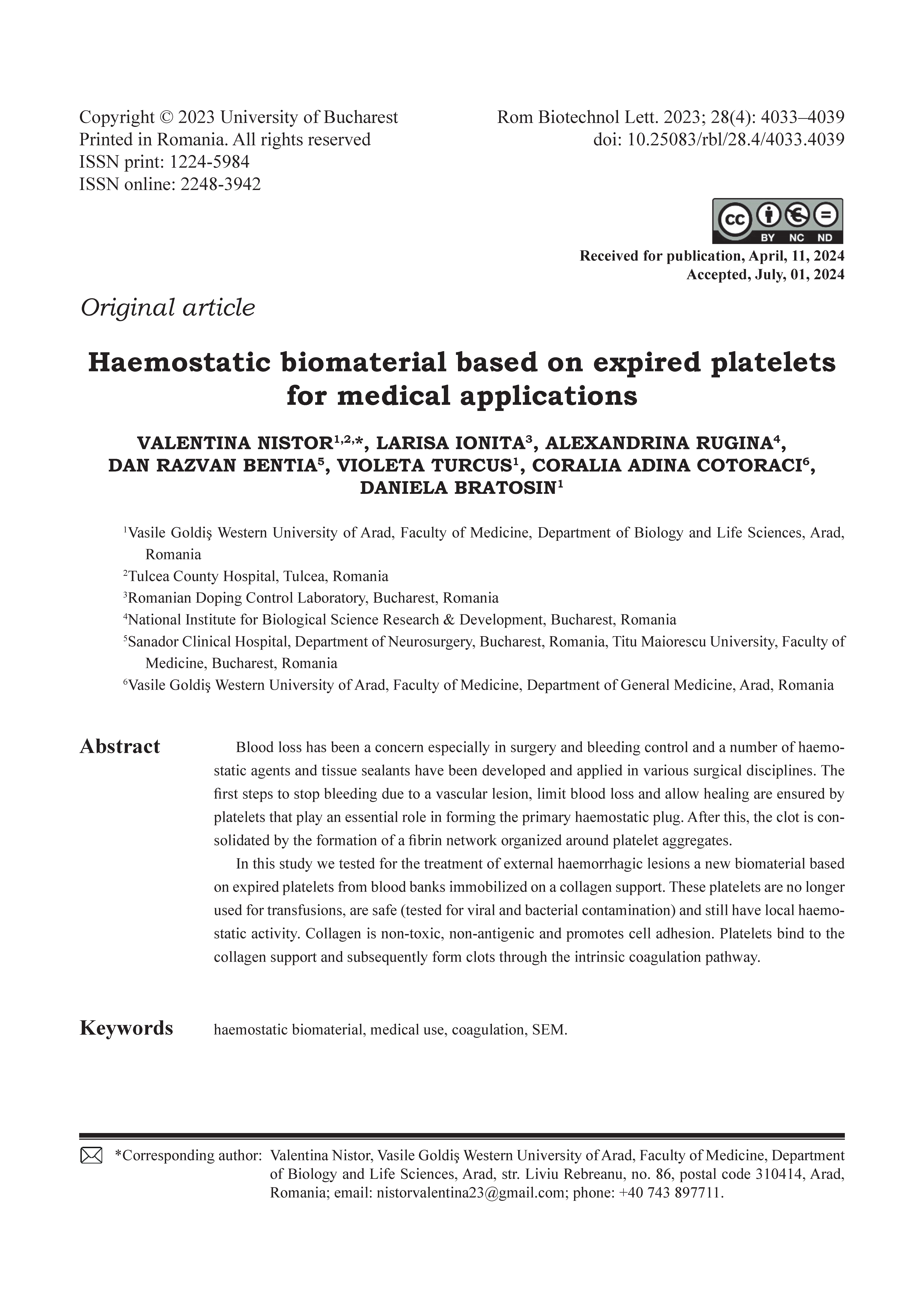Haemostatic biomaterial based on expired platelets for medical applications
DOI:
https://doi.org/10.25083/rbl/28.4/4033.4039Keywords:
haemostatic biomaterial, medical use, coagulation, SEMAbstract
Blood loss has been a concern especially in surgery and bleeding control and a number of haemostatic agents and tissue sealants have been developed and applied in various surgical disciplines. The first steps to stop bleeding due to a vascular lesion, limit blood loss and allow healing are ensured by platelets that play an essential role in forming the primary haemostatic plug. After this, the clot is consolidated by the formation of a fibrin network organized around platelet aggregates.
In this study we tested for the treatment of external haemorrhagic lesions a new biomaterial based on expired platelets from blood banks immobilized on a collagen support. These platelets are no longer used for transfusions, are safe (tested for viral and bacterial contamination) and still have local haemostatic activity. Collagen is non-toxic, non-antigenic and promotes cell adhesion. Platelets bind to the collagen support and subsequently form clots through the intrinsic coagulation pathway.





